 |
DCIP2D:
|
|
Previous Page (IPINV2D) | Next Page (Standard Inversion) IntroductionWe use one synthetic example to illustrate various aspects of DCIP2D Version 3.0. The emphasis of the test inversions are on the newly added features of the inversion programs. The presentations are organized such that each figure presents results of DC inversion and IP inversion together for a given set of input parameters. This format simulates the whole process of inverting a set of DC/IP data acquired in the field. Figure "Synthetic resistivity model and data" displays the resistivity model and the observed apparent resistivity data using a pole-dipole array. The synthetic model consists of two conductors buried in a uniform halfspace that is overlain by an overburden of variable conductivity. A V-shaped valley is cut out to simulate the surface topography. The background has a conductivity of 1 mS/m and the overburden has a conductivity of 0.1 mS/m on the left and 2 mS/m on the right. The buried conductor on the left has a dip of 135o and a conductivity of 100 mS/m, and it is buried at a depth of 20 m to the top. The conductor on the right is a horizontal and conductive block of 100 mS/m buried at a depth of 25 m. The forward modelling uses a mesh of 48 cells in the x-direction and 27 cells in the z-direction so there are 1296 cells. In the survey, surface electrodes are located every 10 m in the interval x=(-100,100) m. We have simulated pole-dipole data with a=10 m and n=1, 8. The data have been contaminated with independent Gaussian noise whose standard deviation is equal to 5% of each accurate datum. The resulting observations are shown as an apparent resistivity pseudo-section in the lower panel of the Figure. Only one strong conductive anomaly is seen in the pseudo-section, and the data are distorted by the surface topography.
Figure "Synthetic chargeability model and data" shows the chargeability model associated with the above resistivity model and the observed apparent chargeability data from the same arrays. The overburden on the left has a chargeability of 0.05 and both buried conductors have a chargeability of 0.15. The apparent chargeability data have been contaminated with Gaussian noise whose standard deviation is equal to 5% of each accurate datum plus a minimum of 0.001. The pseudo-section is shown in the lower panel of the Figure. The data seem to indicate the presence of the horizontal chargeable block, but it is difficult to see the response due to the dipping body on the left.
Test InversionsWe have carried out four DC/IP inversions of the above DC and IP data set. The inversions are designed to illustrate the performance of the inversion program when different combinations of input parameters are used. The emphasis is on the various default modes such as default mesh, default error estimate and misfit level, default reference and initial models, and default sensitivity for the IP inversion. |